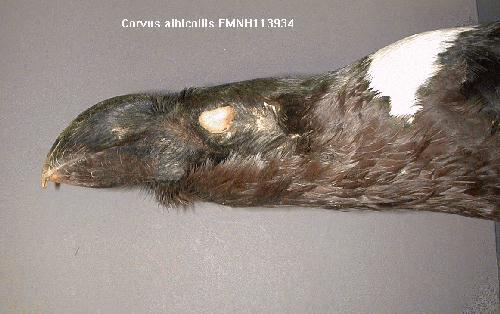
Most people think crows are black, and most are. A number of species in the genus Corvus, however, have extensive white in their plumage.

One of my favorite species the White-necked Raven, Corvus albicollis, of Africa, for example, has a white collar (in addition to its way cool bill).
Some other species have extensive white on other parts of their bodies as well.
Even those species that normally are black may show patches of white on parts of their body, or may be completely white.
American Crows, Corvus brachyrhynchos,
frequently show problems with pigment deposition. Approximately
1% of nestlings that I band in New York show some white in their
feathers, and four times that many have spots of white on their
toes, bill, or other part of the body. I find young like this
every year, and the occurrence is about what I would predict
based on seeing abnormal crows in large foraging flocks.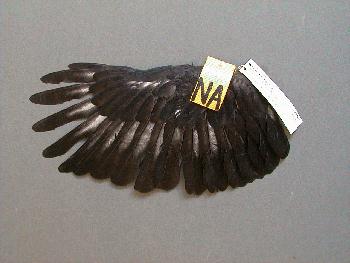
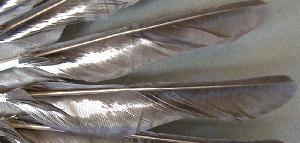
This nestling from my study in 1993 showed rather extreme amounts of white relative to what I usually see. (It was found dead on the Cornell Campus soon after fledging.)
Although I have had several young crows with white in the wings in a single nest , I have not found white to occur in the wings of young of the same adults over successive years (but it could happen). I have a few families that have had multiple broods of young with white spots on their toes, but the numbers are small enough that I cannot distinguish them from random occurrences at this point.
"Albinism" or some problem with pigment production can be arrived at in a number of ways, many of them quite distinct from each other. You can think of any complex, enzyme and protein mediated process rather like starting your car. Many things can go wrong, all of which result in you not being able to start your car. You may not have the key, the battery may be dead, the distributor cap may be missing, the car may be out of gas, etc. Similarly, many factors can interfere with the proper distribution of pigment in the feathers of birds, resulting in white instead. The problems can be localized in time and location (e.g., a damaged cell bed or a short term poisoning), and result in white in restricted areas, such as the crow illustrated above. If the problem in more basic (e.g., a genetic mutation) or occurs earlier in development, the entire bird can be affected.
Some crows can be completely white.
Here is an example of a nearly completely white
young American Crow photographed by Maxine and Jim
Harwood of Piedmont, 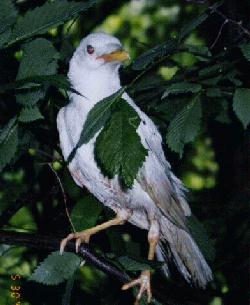 Ohio, June 1998. It was a recently fledged youngster.
The Harwoods report seeing two white crows the next day, probably
this one and a sibling.
Ohio, June 1998. It was a recently fledged youngster.
The Harwoods report seeing two white crows the next day, probably
this one and a sibling.
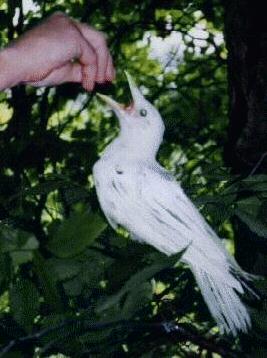
Notice on the one picture that the back is not completely dark. Also, despite the red from the flash, the iris was not pink, but was normally pigmented with blue-gray.
Another white crow picture sent me recently by Burr Cornell of Endicott, NY was of a bird seen in Vestal, New York on 25 October 1998. It shows black in the face and in the wings.
Return to Crow FAQs
Return to the Crow Page
Return to Kevin McGowan's Home Page